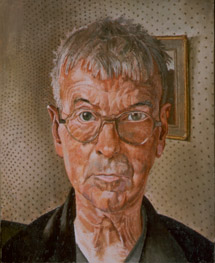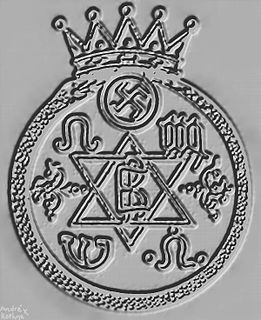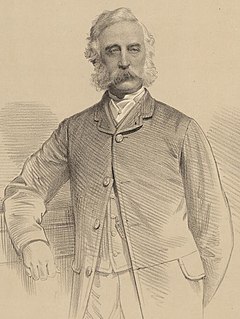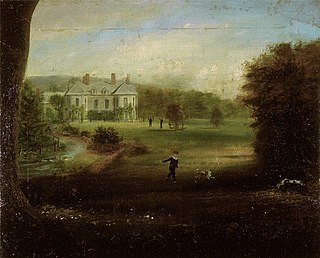This page is based on this
Wikipedia article Text is available under the
CC BY-SA 4.0 license; additional terms may apply.
Images, videos and audio are available under their respective licenses.

Sir Stanley Spencer, CBE RA was an English painter. Shortly after leaving the Slade School of Art, Spencer became well known for his paintings depicting Biblical scenes occurring as if in Cookham, the small village beside the River Thames where he was born and spent much of his life. Spencer referred to Cookham as "a village in Heaven" and in his biblical scenes, fellow-villagers are shown as their Gospel counterparts. Spencer was skilled at organising multi-figure compositions such as in his large paintings for the Sandham Memorial Chapel and the Shipbuilding on the Clyde series, the former being a First World War memorial while the latter was a commission for the War Artists' Advisory Committee during the Second World War.
The Cardigan District of Boroughs was a parliamentary constituency in Wales which returned one Member of Parliament to the House of Commons of the Parliament of the United Kingdom and its predecessors, from 1542 until it was abolished for the 1885 general election. The borough constituency comprised the four towns of Cardigan, Aberystwyth, Lampeter and Adpar - geographically separated from each other but all within the county of Cardiganshire.
Port of Escape is a 1956 British thriller film directed by Tony Young and starring Googie Withers, John McCallum, Bill Kerr and Joan Hickson.

James Morgan Pryse was an author, publisher, and theosophist.
British official war artists were a select group of artists who were employed on contract, or commissioned to produce specific works during the First World War, the Second World War and select military actions in the post-war period. Official war artists have been appointed by governments for information or propaganda purposes and to record events on the battlefield; but there are many other types of war artist.
Sir Richard Pryse, 2nd Baronet was a Welsh landowner and politician who sat in the House of Commons in 1660.
There have been two baronetcies created for members of the Pryse family, one in the Baronetage of England and one in the Baronetage of the United Kingdom. Both creations are extinct.
Sir Richard Pryse was a Welsh politician who sat in the House of Commons from 1584.
Richard Pryse may refer to:
Gwyneth of the Welsh Hills is a 1921 British silent romance film directed by Floyd Martin Thornton and starring Madge Stuart, Eille Norwood and Lewis Gilbert. It was based on a novel by Edith Nepean.

Pryse is an unincorporated community located in Estill County, Kentucky, United States. Its post office is closed.

Pryse Loveden Pryse of Gogerddan, Cardiganshire and Buscot Park, Berkshire was a British Lord Lieutenant and Member of Parliament for Cardigan Boroughs from 1818 until his death in 1849.

Colonel Edward Lewis Pryse was a British Liberal politician.

Pryse Pryse (1815–1855), also known as Pryse Loveden, was a British Liberal politician. He served as MP for Cardigan Boroughs from 1849 until his death in 1855.
The Cardigan Boroughs by-election of 1855 was fought in February 1855. The byelection arose because of the death of the incumbent Liberal MP, Pryse Loveden. It was won by the Conservative candidate John Lloyd Davies. Davies defeated the Liberal candidate, John Evans, former MP for Haverfordwest.

Gogerddan, sometimes spelled Gogarthen, was an estate near to Trefeurig and the most important in what was then the county of Cardiganshire, Wales. Owned since at least the fifteenth century by the Pryse family, the main house, called Plas Gogerddan, still stands and is a Grade II listed building. The estate became especially wealthy from the seventeenth century on the profits from lead mining, which is when the house was constructed. The house was significantly altered in the 1860s and was sold by Sir Pryse Loveden Saunders-Pryse to University College of Wales in 1949.







